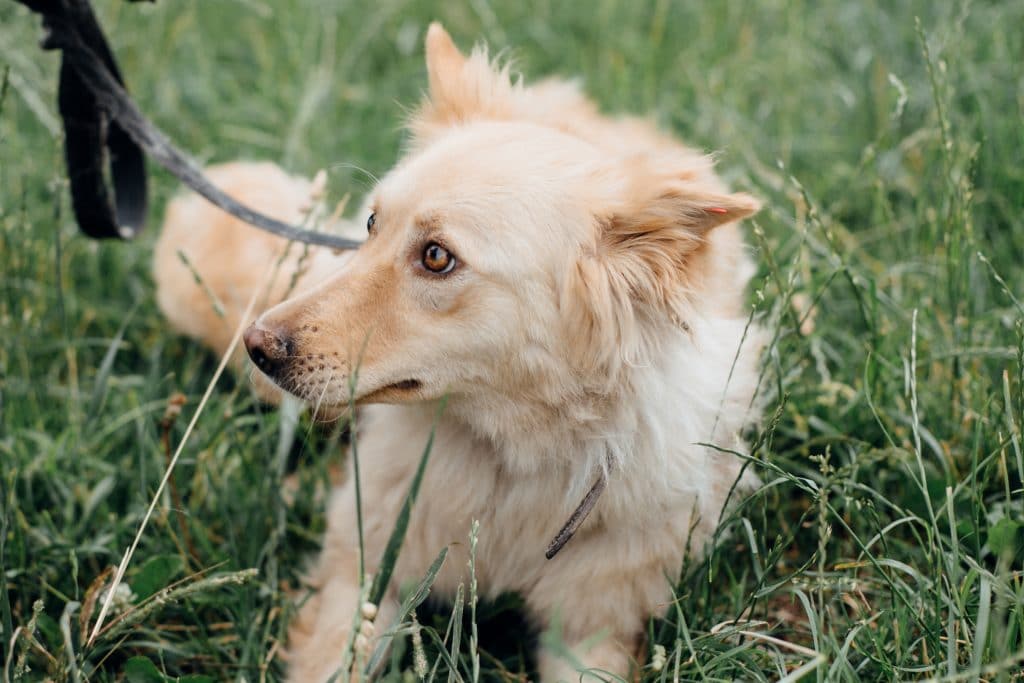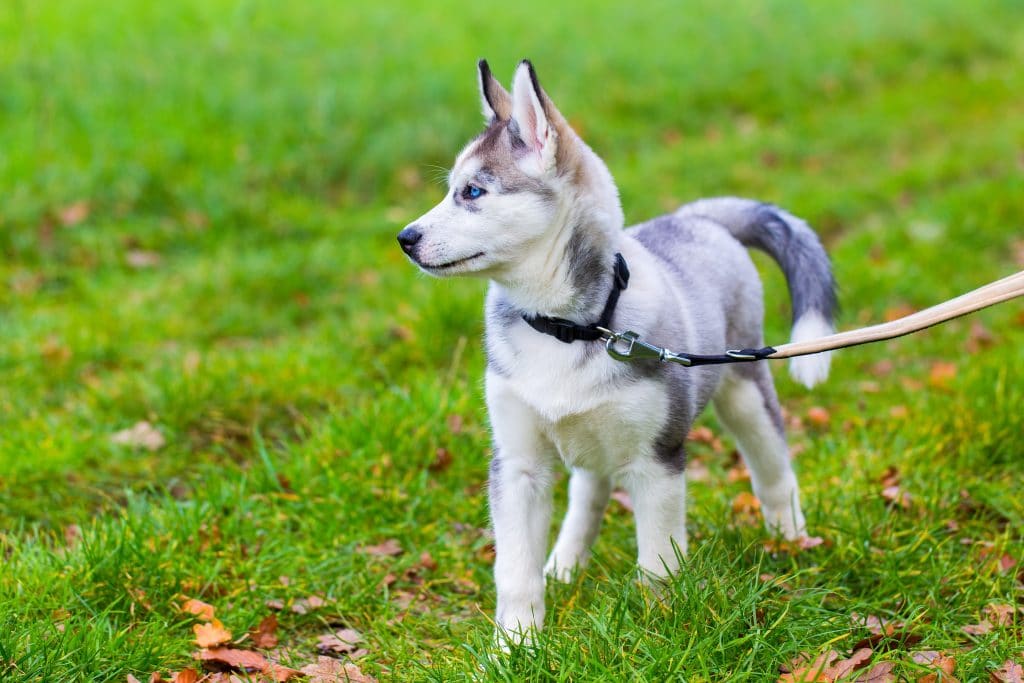

5 Tips to Train a Scared Dog to an Underground Fence
In order to train your dog to an underground fence, it’s important to follow the steps exactly as outlined by the fence company you hire.
When a dog is highly cautious or fearful about a dog fencing system, we refer to it as ‘fence fear’. Dogs might appear afraid of the warning tone, boundary flags, or correction. How you deal with your dog’s fence fear will heavily depend upon the reason behind the fear, as well as the severity of its reaction.
These five tips will help you train a dog that’s scared of an underground fence.
Tip #1 Understand Why Dogs are Afraid

When you understand why dogs are afraid, it makes your job of training more manageable. There are several reasons dogs become scared. If you can identify what made them afraid in the first place, it will help with training. For example, if they were frightened by a loud noise, such as thunder or fireworks, they may continue to be scared of loud noises forever.
Try not to make things worse by making your dog feel bad for being scared or embarrassed by how he reacts. He’s already going through enough on his own and doesn’t need extra problems caused by humans. Instead, try calming him down as best you can and attempt training once he has recovered from his shock or fear enough that he is no longer bothered by whatever it was that frightened him before.
In case of a concern, try the correction at the lowest intensity level on your arm first. Then, when you realize how mild the static shock is, you can be assured that the correction will not be hurtful for your dog.
Tip #2 Use Rewards That the Dog Loves
Your dog has developed negative associations with the yard, and it is crucial to converting those associations into positive ones. Use rewards that your dog loves or what I like to call high-value treats to associate with whatever you are trying to teach positively. For example, if your dog is afraid of an underground fence, have a favorite toy on hand and use it as your reward whenever he gets close enough to touch it. If he doesn’t go near it at first, don’t force him—you can try again in another situation where there are fewer distractions. Over time, he will become accustomed to going near something that scares him. This method takes time but works!

In addition, we recommend performing a victory lap within the containment region to conclude every training session. Such positive, upbeat, and fun-filled laps will once again remind your dog that the safe zone is not something to be feared, but instead, something to be excited about.
Tip #3 Be Patient
The fence does not work if you train your dog in one day or even one week. The training process needs to be consistent and takes time. Dogs are intelligent, but they learn at their own pace. You can help them learn faster by using positive reinforcement when making good choices and redirection when making bad choices. Be patient with your dog! You may also be interested in: How To Install An Underground Fence System for Your Yard?
Tip #4 Keep training sessions short
Keeping the training sessions short and simultaneously increasing the pre-and post-training playtime will, once again, help the positive associations overpower their negative counterparts. Make sure that your dog does NOT receive multiple corrections in a training session. So, once a correction has been given, you should either conclude the session or switch to the tone-only mode.

Dogs afraid of underground fences are likely to be anxious and bark, so you need to keep training sessions short to reduce their anxiety. However, you don’t want your dog to become so stressed that they begin suffering from avoidance behaviors or develop separation anxiety.
Training sessions should not last more than 15 minutes, so try breaking them up into multiple shorter sessions if possible. Also, make sure that your dog does NOT receive multiple corrections in a training session. So, once a correction has been given, you should either conclude the session or switch to the tone-only mode.
As a rule of thumb, if your dog feels anxious, it is probably best for him to stop training that day; don’t push him too hard and risk making things worse. Instead, focus on training when your dog is happy and well-rested.
Tip #5 Don’t Force Things
Many dog owners make the mistake of forcing their pets into training. While scolding and yelling can work in some cases, it often does not and will only scare your dog further. A scared dog doesn’t know why you’re angry with them, so try and avoid these tactics and use encouragement instead! Give Your Dog Time: One thing that you need to do is give your dog time when it comes to training. Try not rushing things, and remember that dogs do not learn a language as quickly as we do, so they will take a bit longer to understand what you are asking them entirely.
Conclusion
Seeing your dog display fear or apprehension of the underground fence system might be concerning to you. However, this fence fear is nothing that cannot be overcome. Follow the steps discussed in this blog to get your dog to feel at home with the dog fencing system.
You may also be interested in our review of the top underground dog fence.
Discover how to create a joyful, healthy home for your pet.
Subscribe to your weekly rundown of practice, real life ideas and training tips straight to your inbox.


